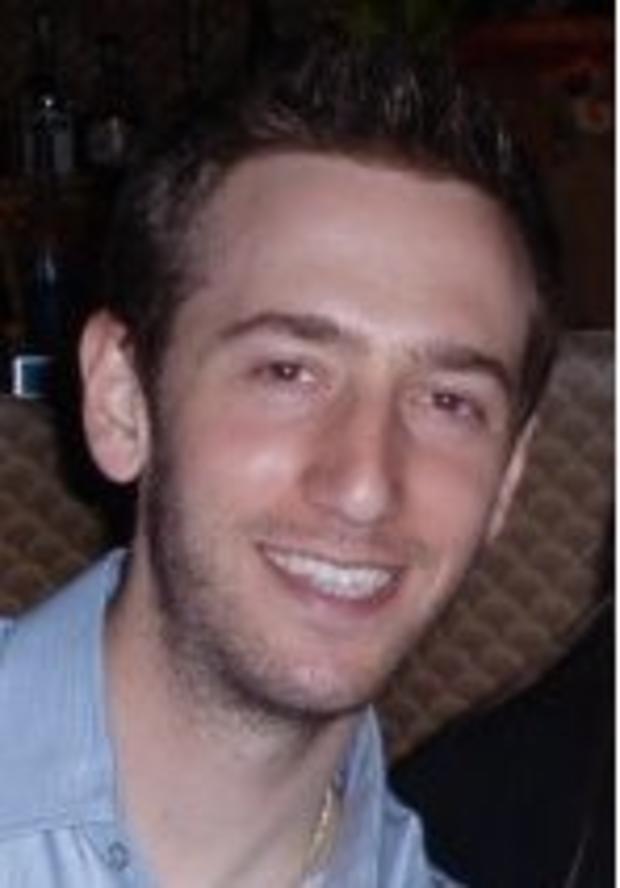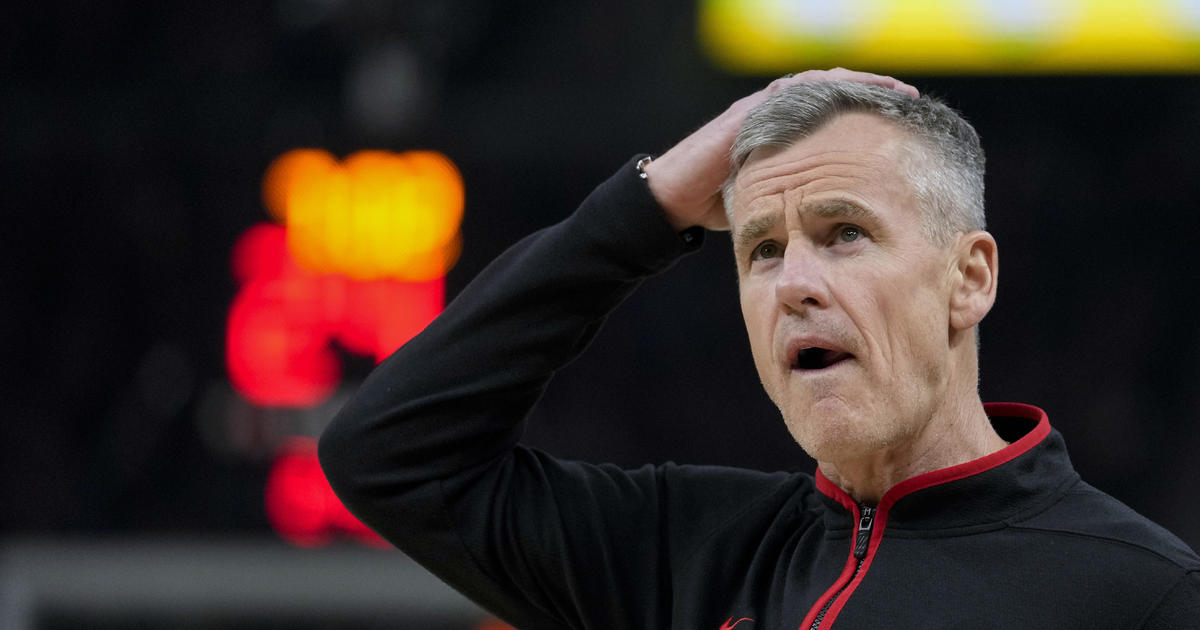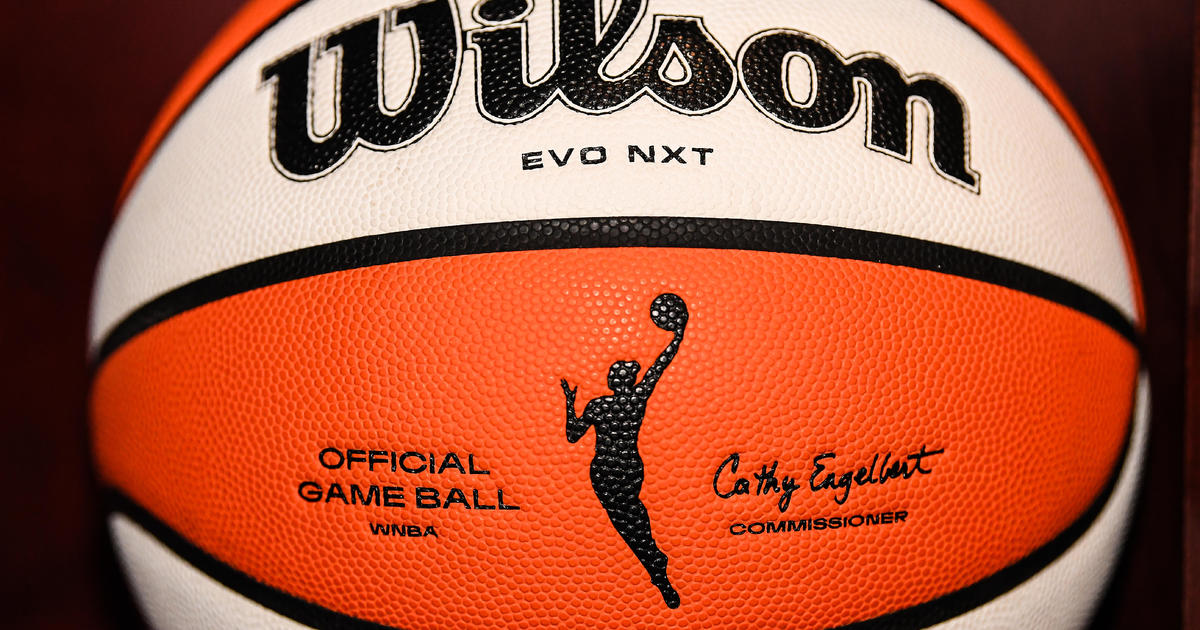Hoge: Inside The NCAA Selection Process - Day 1
By Adam Hoge-
Editor's note: Adam is among 20 members of the media from across the country comprising a mock NCAA Tournament selection committee at NCAA headquarters in Indianapolis. The committee is simulating the five-day selection process in a condensed two-day session.
INDIANAPOLIS (CBS) Day 1 is in the books.
Our mock committee met for about seven hours Thursday at the NCAA offices in Indianapolis as we started putting together a field based on play to date. Twenty members of the media are in attendance and we are paired up to represent the 10 members of the real NCAA selection committee.
I am paired with Derek Schultz from WNDE 1260, a sports radio station in Indianapolis. Together, we represent Peter Roby, the athletic director from Northeastern University who is also in attendance observing.
I won't go through everyone involved, but I will mention that Seth Davis from Sports Illustrated and CBS Sports, Matt Winer from Turner Sports, and Steve Scheer from CBS Sports are representing Mike Bobinski, who is the AD at Xavier and this year's chair of the Division I Men's Basketball Committee. Bobinski is also in attendance providing guidance throughout the process.
So where do we stand after one day?
Well, 35 of 37 at-large teams have been selected into the field and the first three lines have been seeded. In other words, we have a good idea of who is in the field and we know who the No. 1, No. 2 and No. 3 seeds are… for now.
Things can change as we go through and "scrub" the field, but we will have a final bracket that I will share when we finish up Friday afternoon.
The Process
The day started with a conference monitoring report. Each pairing was assigned three conferences to study and present to the group. The main question to consider here is: Is this conference a one-bid league or will it have multiple bids? Derek and I got it pretty easy during this portion of the process because we were assigned the Horizon, MEAC and Southland -- all one-bid leagues.
After the conference monitoring, each pairing submitted their initial ballot, which consists of going through every eligible Division I team and deciding whether they are an at-large team, a team deserving of consideration or a team that should be ignored.
For the purposes of this exercise, we were pretending it was Wednesday of selection week (the first day the committee meets) and the regular season was over. We were only considering results through Thursday, not future results that could happen.
At-large votes are only supposed to go to teams that are virtual locks to make the tournament. In other words, by giving a team an at-large vote, you are essentially saying that that team could lose the first game of its conference tournament and still make the NCAA Tournament. If a team gets all but two at-large votes, they are automatically put into the field and won't be taken out.
Our initial vote yielded 19 at-large teams: Indiana, Miami, Duke, Michigan State, Michigan, Syracuse, Arizona, Florida, Kansas, New Mexico, Butler, Louisville, Wisconsin, Ohio State, Georgetown, Marquette, Oklahoma State, Kansas State and Pittsburgh.
Meanwhile, any team that receives at least three consideration votes goes to the "Under Consideration" board. I believe we had 40 teams on that board.
Then the fun starts.
Essentially, teams move from the "Under Consideration" board to the tournament field by getting voted in. From our board of 40 teams, each pairing voted for their top eight teams. Those votes were tallied to narrow down the ballot to eight teams who would be voted on by the group. The top four vote-getters from that ballot were then added to the at-large field.
In our first round of voting, San Diego State, Cincinnati, North Carolina State and Oregon were added to the field.
The other four teams (Illinois, Minnesota, Notre Dame, UCLA) on that ballot were then placed in a holding pattern. The whole process then started up again as the voting determined four new teams to join the four teams in the holding pattern to form a new ballot of eight.
Confused yet? I promise it makes sense.
In the second round of voting, Colorado State, Illinois, Minnesota and UCLA were added to the field.
In the third round of voting, Colorado, Notre Dame, Oklahoma and UNLV were added to the field.
In the fourth round, Missouri, Saint Louis, VCU and Wichita State were added.
It's important to remember that we only started with 19-of-37 at-large bids filled so the teams that moved from the "Under Consideration" board to the actual tournament field through the voting process are not necessarily bubble teams. In fact, teams like Illinois, Minnesota and Notre Dame are safely in the field. If you're counting at home, that's 35 of 37 at-large bids handed out. But keep in mind, some of those at-large teams will become automatic qualifiers by winning their conference tournaments, leaving room for even more teams to get in.
In my opinion, notable teams who are still not yet in the field after the first day include: Creighton, North Carolina, La Salle, Memphis, Ole Miss, Kentucky, St. Mary's, Temple, Baylor, Iowa State, Arizona State, Boise State, Villanova, Virginia, St. John's and Charlotte.
As you can see, that's a lot of teams. But again, conference champions still need to be determined. Right now, only 14-of-31 automatic qualifiers have been determined so as many as 17 more at-large spots could open up, barring any upsets. (Note: For the purposes of this exercise, the NCAA is determining the conference champions for us. They include Gonzaga and Indiana State, two teams who could make the at-large field even if they lose in their conference tournament. Remember, 13 conference championships are determined before the committee meets during selection weekend.)
Seeding
Throughout the process, the committee shifts its focus back and forth between the at-large field and seeding. After our first two rounds of voting, we took a break and started seeding the field.
This is also done by a similar voting process. Our voting yielded the following seeds (in order):
No. 1 - Indiana, Miami, Duke, Florida
No. 2 - Michigan State, Michigan, Arizona, Gonzaga
No. 3 - Kansas, Syracuse, Louisville, Butler
Now, earlier I mentioned "scrubbing", which is the process of going back through the field and adjusting the seeding by comparing resumes. This was something we got to late Thursday night, but our initial scrubbing yielded a pretty big change. When we compared Michigan State's resume to Florida's resume, there was enough objection to motion a vote to switch the two teams. The vote passed and the Spartans were bumped up to a No. 1 seed, while Florida fell to a No. 2 seed. For the actual committee, this scrubbing process happens throughout the entire field and considering we spent at least 15 minutes on that one debate, you can see why the committee needs five whole days.
And that's an important point I should stress. Throughout the whole process, including during voting periods, committee members are comparing and discussing resumes. They have the ability to compare resumes right in front of them and as a group on the big board.
If there's one thing I've learned on the first day, it's that the committee ends up discussing pretty much anything the media or fans have discussed. If you've ever said, "But did they look at this?", the answer is probably yes.
Friday we will continue to fill out the field as more automatic qualifiers are determined. We'll basically be simulating "Selection Sunday" and we'll have a final bracket I will share right here on 670TheScore.com.
Adam is the Sports Editor for CBSChicago.com and specializes in coverage of the Bears, White Sox and college sports. He was born and raised in Lincoln Park and attended St. Ignatius College Prep before going off to the University of Wisconsin-Madison where he earned a Journalism degree. Follow him on Twitter @AdamHogeCBS and read more of his columns here.




